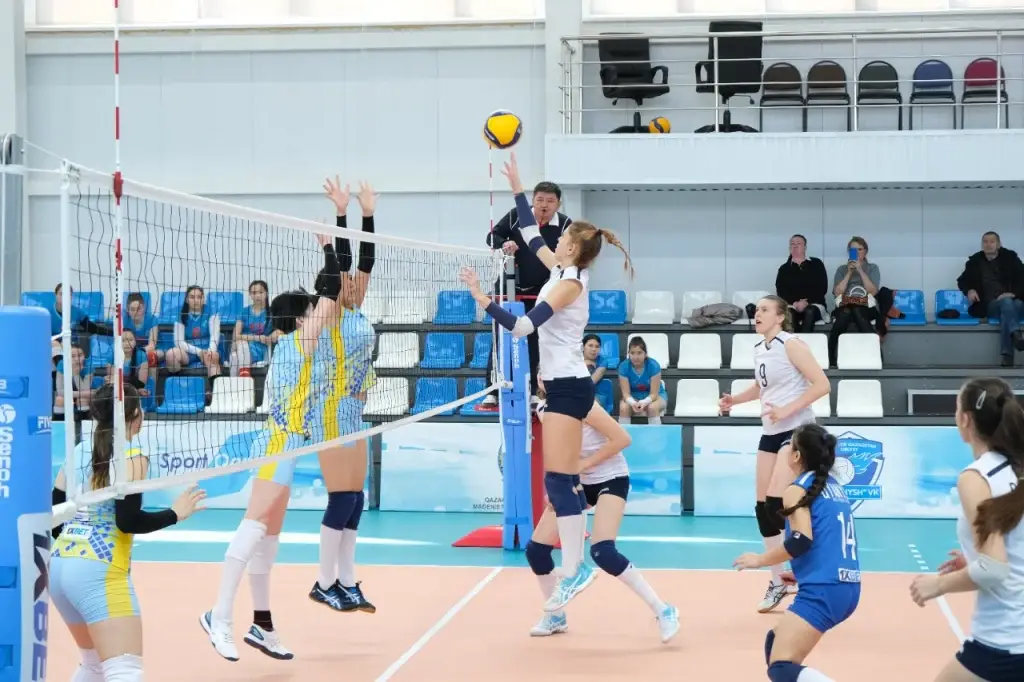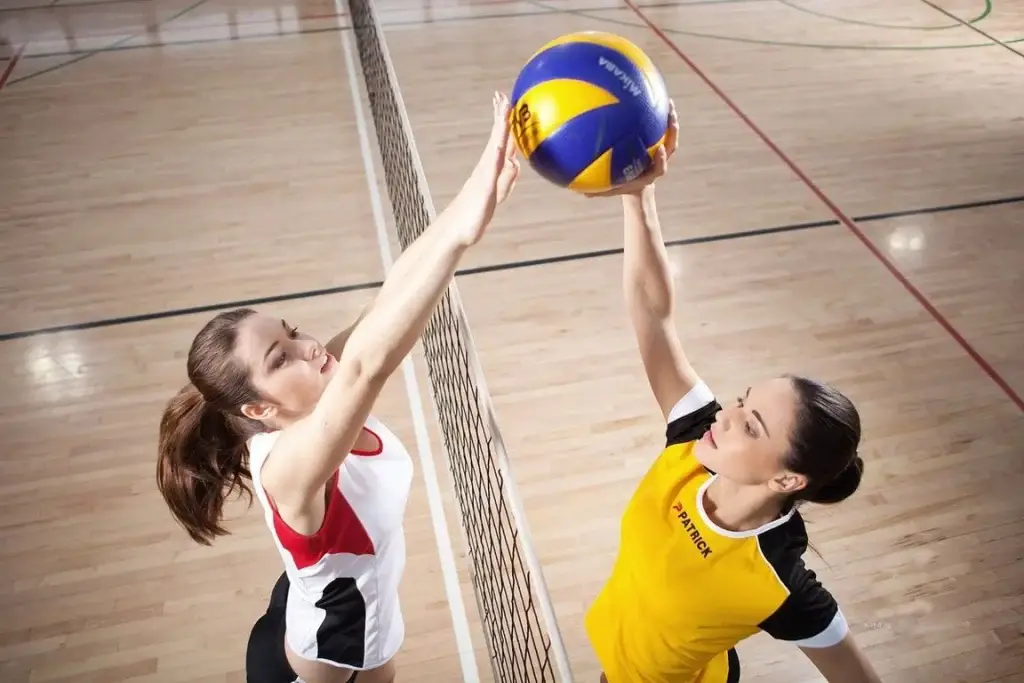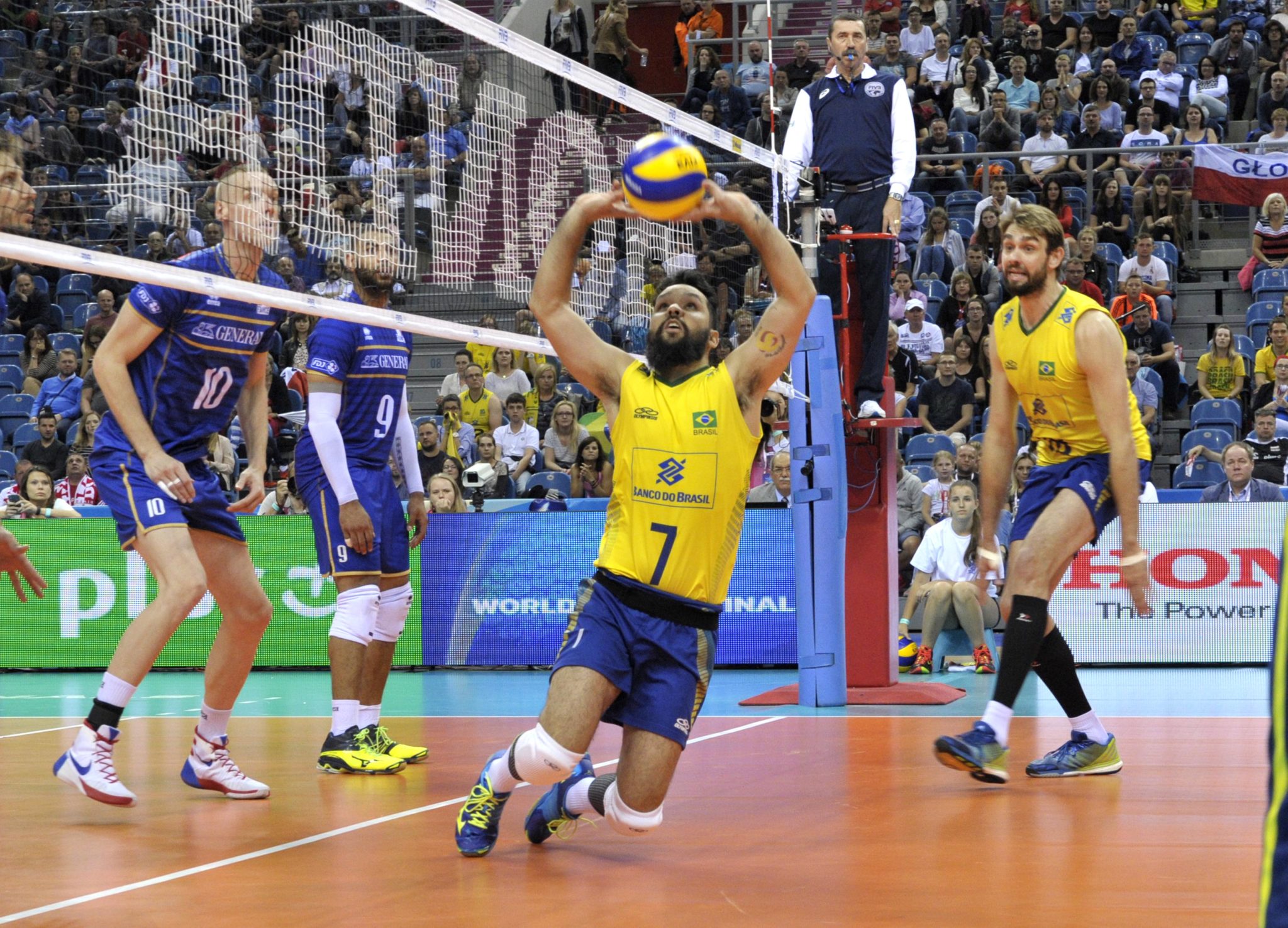Understanding the positions of players in volleyball allows you to develop effective tactics, close gaps in reception and increase the effectiveness of attacks. The court is divided not only into front and back lines, but also into roles that determine the functions of each player when they touch the ball. Let’s take a closer look at the tasks of each player.
Basic framework: player positions in volleyball
The positions of the players in volleyball form the strategic framework of the team. Six people are on the court at the same time, and each of them fulfils a precisely defined role. The positions not only determine the arrangement, but also who receives, who passes and who finishes.
Setter (passer): decision-making centre
 The setter in volleyball directs the game. They receive the ball after the reception and choose the direction of the attack. This player decides who attacks – outside, middle or diagonal. Their main task is to pass the ball to the attacker in a way that makes it easy to hit. The setter must react quickly, remember the opponents’ actions well and be able to anticipate the next moves.
The setter in volleyball directs the game. They receive the ball after the reception and choose the direction of the attack. This player decides who attacks – outside, middle or diagonal. Their main task is to pass the ball to the attacker in a way that makes it easy to hit. The setter must react quickly, remember the opponents’ actions well and be able to anticipate the next moves.
Characteristics:
- Position: right outside hitter (zone 2) or right back hitter (zone 1).
- Area of responsibility: second ball reception.
- Efficiency criteria: Passing accuracy, quick decision-making, stealth.
The setter is the playmaker in volleyball, who sees the court like a chess player.
Diagonal player: Finisher
This player attacks from the back and front lines, usually from the right side of the court. Their main task is to attack after a pass from the setter, especially in difficult situations when other lines are blocked. The diagonal player must attack every ball – even low, unfavourable or pressured balls.

Characteristics:
- Position: Zone 1 or 2.
- Special feature: does not participate in the serve.
- Main parameters: jump height, hitting power, reaction speed.
He completes the ball transfer chain. This position of the player in volleyball creates pressure: it is precisely the diagonal player who must turn chaos into points.
Middle blocker: control over the net
The player is located in the middle of the front line (zone 3). His main task is to block. He follows the actions of his opponents, guesses the direction of the attack and jumps towards it. The player also participates in fast attacks – short passes directly in front of the setter.
Characteristics:
- Position: Zone 3.
- Specialisation: Blocking and attacking at the first tempo.
- Required characteristics: Timing, coordination, understanding of the game.
The middle blocker in volleyball forms the first line of defence and also serves as an attacking option in fast combinations.
Libero: Shield of the back line
The libero position in volleyball creates the structure of the game in defence. The player only appears in the back line and performs exclusively defensive functions. Unlike the others, the libero does not participate in attacking actions and does not serve the ball, but he is the one who usually has the most ball touches in the game.
The player replaces the middle blocker when the latter retreats to the back line. The focus is on receiving the serve and passing the ball to the setter in an optimal position. Every touch of the ball is crucial: a complete attack originates from him.
In training, the athlete practises only defensive elements – receiving with the lower hand, securing under the block, movements along the back line. Serves in modern volleyball games fly at speeds of 80 to 120 km/h, and the player in the libero position must be able to read the trajectory in a fraction of a second.
Characteristics:
- Form: A distinctive colour distinguishes him from the other players; according to the rules, visual highlighting is mandatory.
- Tasks: Receiving the serve, follow-up after the attack, covering, defending the line.
- Technical skills: Stability when receiving, responsiveness, passing accuracy, falling and getting up.
- Physical requirements: Endurance, flexibility, concentration, quick movements.
The libero player brings the defence together, provides a ‘second wind’ after difficult playing situations and takes the strongest hits to keep the ball in play.
Outside hitter (attacker): All-rounder and pace setter
The outside hitter position is one of the most resource-intensive and tactically demanding. The player has a dual role: they are actively involved in both attack and reception. The positions of players in volleyball with the functions of an outside hitter are located on the left side of the court, usually in zone 4 (front left) and zone 5 (back left).
Immediately after the opponent’s serve, the player lines up in the reception line together with the libero and another back player. Once he has received the ball, his next task is to quickly take up a position for the attack. If the ball goes to a teammate, he moves along the net to make room for the hit. The player is involved in almost every play. He finishes attacks in balanced plays, supports the reception and secures the setter in difficult sets. His area of responsibility is the flank, but he must also master the technique of moving across the entire front line.
Characteristics:
- Position: Zone 4 (left attack), 5 (receiving).
- Tasks: Receiving the serve, hitting from the wing, blocking the opponent’s attacks.
- Special features: Quick adaptation to phase changes, understanding of the game, endurance.
- Physical characteristics: High jumping power, explosiveness, body control during abrupt changes of direction.
The attacker serves as a link between the rows. In critical moments, the team passes the ball to him so that he can finish the attack, take a risk or ensure safety. Of all the positions in volleyball, this is the most versatile and energy-intensive.
Player positions in volleyball: formation and movement
Player positions in volleyball are strictly regulated by the line-up rules. Before serving, the team must maintain a specific order of zones – from 1 to 6 in a clockwise direction. Players must be in their positions at the time of the serve, but may move immediately afterwards.
There are two basic systems:
- 5–1 – one setter in the team who plays all moves in both the back and front rows;
- 6–2 – two setters who only play in the back row (they attack in the front row).
Explanation of the zones:
1 – back right zone (serve).
2 – front right zone (attacks and blocks).
3 – front middle zone (middle blocker).
4 – front left zone (finishing or attacking player).
5 – back left zone (receiving).

6 – back middle zone (defence, blocking).
The players in the back row are not allowed to attack from the front zone over the net. In this context, the movement after the serve allows the back players to take up their usual positions without breaking the rules.
Tactical principles:
- Before the serve, the setter tries to take up a position closer to the ball.
- The libero enters the game immediately after the change to the back row.
- The attackers move to the edge of the net to attack.
- The middle blocker acts strictly in the middle, when blocking and during fast attacks.
The formation changes after each serve by the team. During rotation, all players move clockwise one zone further. Nevertheless, the function of each individual remains the same – the setter continues to pass, the attacker continues to attack. The correct formation is the key to ensuring that the roles of the players in volleyball function as a single mechanism.
Conclusion
 Every function and every role in volleyball is part of a well-coordinated mechanism. The success of a team does not depend on the strength of a single player, but on the right line-up and the interchangeability of the players. The positions of the players in volleyball determine the rhythm, coordination and result. A skilled coach sees not only athletes on the court, but a system in which everyone knows their place and acts precisely according to their role.
Every function and every role in volleyball is part of a well-coordinated mechanism. The success of a team does not depend on the strength of a single player, but on the right line-up and the interchangeability of the players. The positions of the players in volleyball determine the rhythm, coordination and result. A skilled coach sees not only athletes on the court, but a system in which everyone knows their place and acts precisely according to their role.
 en
en  ru
ru  de
de  ar
ar  es
es  hi
hi  fr
fr  nl
nl  it
it  pt
pt  el
el 



